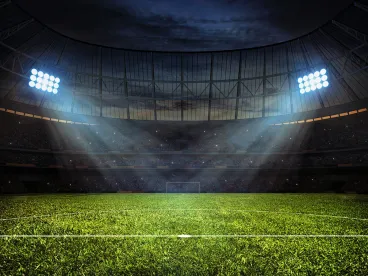On 8 February 2022, the National College Players Association, an advocacy group for college athletes, filed an unfair labor practice charge with the National Labor Relations Board (NLRB), accusing the National Collegiate Athletic Association (NCAA), Pacific-12 Conference (PAC-12), the University of California Los Angeles (UCLA), and the University of Southern California of misclassifying the athletes and interfering with the athletes’ rights to discuss compensation and working conditions (the NCAA Charge). The unfair labor practice charge came after Jennifer A. Abruzzo, general counsel of the NLRB, issued Memorandum GC 21-08 (GC 21-08) on 29 September 2021, to the regional field offices signaling significant changes to the interpretation of the National Labor Relations Act (NLRA) as it relates to “Players at Academic Institutions” (Players at Academic Institutions). In sum, GC 21-08 provides updated guidance regarding the NLRB’s position that certain Players at Academic Institutions are employees under the NLRA. GC 21-08 set the perfect blueprint for the advocacy group to file the NCAA Charge with the NLRB.
As explained further below, GC 21-08 expressly rejects the term “student-athletes” as a per-se violation of Section 8(a)(1) of the NLRA and instead endorses the use of the term “Players at Academic Institutions.” Additionally, GC 21-08 signals an expansive interpretation of protected activity under Section 7 of the NLRA, to include activism surrounding racial and social justice issues as well as activism concerning COVID-19 health and safety issues. Further, GC 21-08 reflects an aggressive stance by the NLRB regarding joint-employer liability, signaling that the NLRB will pursue charges against a private athletic conference or association even when some member schools are public state institutions.
HISTORICAL BACKGROUND
This is not the first time the NLRB has confronted issues pertaining to student employees. For the last 50 years, the NLRB has issued, rescinded, and reinstated decisions addressing the fundamental premise of students as employees under the NLRA.
The NLRB first asserted jurisdiction over private colleges and universities in Cornell University.1 Two years later, it held that 125 graduate student assistants (100 teaching assistants and 25 research assistants) were excluded from a faculty’s bargaining unit in Adelphi University.2 There, the NLRB concluded that graduate students are, first and foremost, students working toward their academic degrees, and their employment depends entirely on their continued status as such.3 The NLRB elaborated upon this decision in Leland Stanford Junior University,4 holding that graduate student research assistants are not employees under Section 2(3) of the NLRA .5
Nearly three decades later, the NLRB reversed course in New York University6 and held that roughly 1,700 university graduate student assistants were statutory employees despite their enrollment status as students. Not long thereafter, in 2004, the NLRB overruled New York University, holding that graduate student teaching assistants, research assistants, and proctors were not statutory employees, reasoning that “graduate student assistants are primarily students and not statutory employees.”7 The collective-bargaining obligation “would intrude upon decisions over who, what, and where to teach or research,” crimpling the “principal prerogatives of an educational institution.”8 In 2016, the NLRB expanded its ruling in New York University to cover both externally-funded graduate research assistants and undergraduate student assistants.9
Likewise, this is not the first time the NLRB has examined the status of student athletes. In 2015, the Obama-era NLRB dismissed a case inquiring whether Northwestern University student football players qualified as employees under the NLRA On 31 January 2017, then general counsel for the NLRB, Richard F. Griffin, issued Memorandum GC 17-01 (GC 17-01),10 summarizing three decisions relating to representation of bargaining units of university faculty and students under the NLRA. Of relevance is Northwestern University,10 where the NLRB declined to exercise jurisdiction over representation of Northwestern University’s scholarship football players and declined to take a stance as to whether the players were employees under the NLRA. As GC 17-01 notes, nothing in Northwestern University precludes the NLRB from finding that scholarship football players are employees under the NLRA. In fact, GC 17-01 describes evidence that supports the finding of an employee status under the NLRA, including: (1) football players receive significant compensation, (2) the NCAA controls the players’ terms and conditions of employment, and, (3) the athletes generate millions of dollars in profit for the university. Effectively, GC 17-01 laid the framework for the NLRB’s current general counsel, Jennifer Abruzzo, and the NLRB, to once more explore the student-athlete classification issue.
MEMORANDUM GC 21-08
Applying common-law agency rules governing the employer-employee relationship, GC 21-08 states that “the law fully supports a finding that scholarship football players at Division I Football Bowl Subdivision (FBS) private colleges and universities, and other similarly situated Players at Academic Institutions are employees under the NLRA.” GC 21-08 references the fact that Players at Academic Institutions perform services for their respective academic institutions and the NCAA in return for compensation and subject to their control. Further, GC 21-08 draws support for its position from the “significant developments in the law, NCAA regulations, and the societal landscape.” Specifically, GC 21-08 references the U.S. Supreme Court’s recent decision12 in Nat’l Collegiate Athletic Ass’n v. Alston,13 the NCAA’s suspension of name, image, and likeness rules for Players at Academic Institutions, and the collective action that is occurring at “unprecedented levels”14 by Players at Academic Institutions. In line with recent indications from the NLRB as discussed in the 8 April 2021 K&L Gates Alert, GC 21-08 signals an expanded interpretation of concerted and protected activity to include group actions or discussions related to social justice issues and COVID-19 health and safety issues.
Further, GC 21-08 states that misclassifying Players at Academic Institutions as “student-athletes” has a chilling effect on Section 7 activity because it leads Players at Academic Institutions to believe they are not subject to the NLRA’s protection. Accordingly, GC 21-08 indicates an intent to pursue an independent violation of Section 8(a)(1) where an employer misclassifies Players at Academic Institutions as “student-athletes.” Section 8(a)(1) of the NLRA makes it an unfair labor practice for an employer “to interfere with, restrain, or coerce employees in the exercise of the rights guaranteed in Section 7” of the NLRA. Generally, when an employer has been found to have committed a violation of Section 8(a)(1) of the NLRA, the NLRB will issue a cease and desist order and also require a notice to be posted for 60 consecutive days on the employer’s premises.
Moreover, GC 21-08 signals an aggressive interpretation of joint-employer liability. Specifically, GC 21-08 contends that because the NCAA “exercises strict control” over Players at Academic Institutions, and because the NCAA or similar athletic conferences are private entities created by member schools, the NLRB “will consider pursuing charges against an athletic conference or association even if some member schools are state institutions.” Importantly, the interpretation of joint-employer liability found in GC 21-08 could extend beyond the field of college athletics.
OPEN LEGAL IMPLICATIONS
Given the NLRB’s clear intention to expand the scope of protected activity, all employers (not just academic institutions) should exercise caution when deciding whether or not to discipline or curtail discussions concerning health and safety concerns (importantly as related to the COVID-19 pandemic) or social justice issues. Separately, given the aggressive position on joint-employer liability, GC 21-08 may serve as a warning for public employers that, under similar circumstances, the NLRB may attempt to impose liability on employers outside the scope of the NLRA. The NCAA Charge is notable because, while the NLRB has jurisdiction only over private employers, the inclusion of UCLA, a public university, provides an opportunity for the NLRB to assert that the NCAA and PAC-12 are joint employers, along with member institutions that employ both private and public sector employees.
Significantly, the effect of classifying Players at Academic Institutions as employees under the NLRA remains an open question. Presumably, Players at Academic Institutions will enjoy the right to strike, form labor unions, and engage in other concerted activity. If collective bargaining negotiations were to occur, it is unclear as to the scope of topics that may be included as mandatory subjects of bargaining. Since academics likely will remain intertwined with athletics, to what extent would Players at Academic Institutions be able to raise academic issues, including class schedules, academic housing, graduation requirements, or minimum grade point averages as topics of bargaining? Such topics are, of course, absent from union contracts in professional sports leagues, but they could arguably constitute part of the working conditions for Players at Academic Institutions.
Additionally, it remains to be seen whether the U.S. Department of Labor or other federal and state employment agencies will also adjust their guidance and consider Players at Academic Institutions as employees for purposes of wage and hour laws, workplace health and safety laws, workers’ compensation benefits, unemployment insurance, leave laws, or anti-discrimination protections under employment laws. Indeed, currently pending in the U.S. District Court for the Eastern District of Pennsylvania15 is a purported class action16 under the Fair Labor Standards Act requesting that the NCAA comply with federal wage requirements with respect to college athletes. Separately, the scope of which specific college athletes (apart from football players at Division I FBS private colleges and universities) are included in the term “Players at Academic Institutions” remains open to interpretation.
1 183 N.L.R.B. 329 (1970).
2 195 N.L.R.B. 639 (1972).
3 Id. at 640.
4 214 N.L.R.B. 621 (1974).
5 Section 2(3) of the NLRA defines “employee” to “include any employee, and shall not be limited to the employees of a particular employer, unless the Act [this subchapter] explicitly states otherwise, and shall include any individual whose work has ceased as a consequence of, or in connection with, any current labor dispute or because of any unfair labor practice, and who has not obtained any other regular and substantially equivalent employment, but shall not include any individual employed as an agricultural laborer, or in the domestic service of any family or person at his home, or any individual employed by his parent or spouse, or any individual having the status of an independent contractor, or any individual employed as a supervisor, or any individual employed by an employer subject to the Railway Labor Act [45 U.S.C. § 151 et seq.], as amended from time to time, or by any other person who is not an employer as herein defined.”
6 New York University, 332 N.L.R.B. 1205 (2000).
7 Brown University, 342 N.L.R.B. 483 (2004).
8 Id. at 490
9 Columbia University, 364 N.L.R.B. No. 90 (2016).
10 National Labor Relations Board Memorandum GC 17-01 (General Counsel’s Report on the Statutory Rights of University Faculty and Students in the Unfair Labor Practice Context), withdrawn on December 1, 2017.
11 362 N.L.R.B. No. 167 (2015).
12 This past June, the U. S. Supreme Court signaled it is open to the idea of student-athlete compensation in a unanimous ruling in National Collegiate Athletic Ass’n v. Alston. While the Supreme Court did not go as far as stating that student athletes are entitled to receive some form of compensation, it held that the NCAA cannot prevent student athletes from receiving “education-related benefits,” acknowledging that college sports is a profit-making enterprise.
13 141 S. Ct. 2141 (2021).
14 Specifically, GC 21-08 references activism surrounding social justice issues, including activism following the murder of George Floyd and support of the Black Lives Matter movement, as well as activism regarding health and safety during the COVID-19 pandemic.
15 Johnson v. Nat’l Collegiate Athletic Ass’n, Case No. 2:19-cv-05230 (E.D. Pa. Aug. 25, 2021).
16 On 13 October 2021, the plaintiffs requested conditional certification of a class consistent of all student athletes who played for NCAA Division I schools since April 2017.






 />i
/>i

